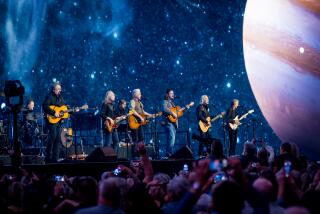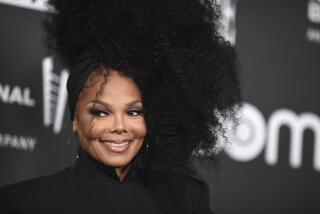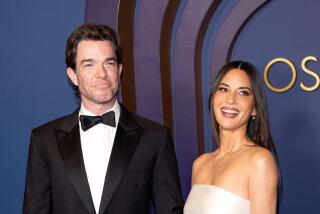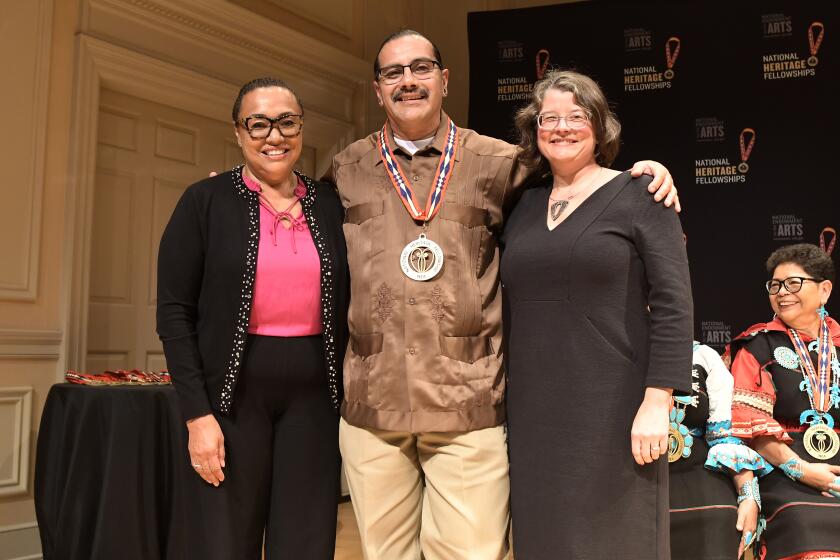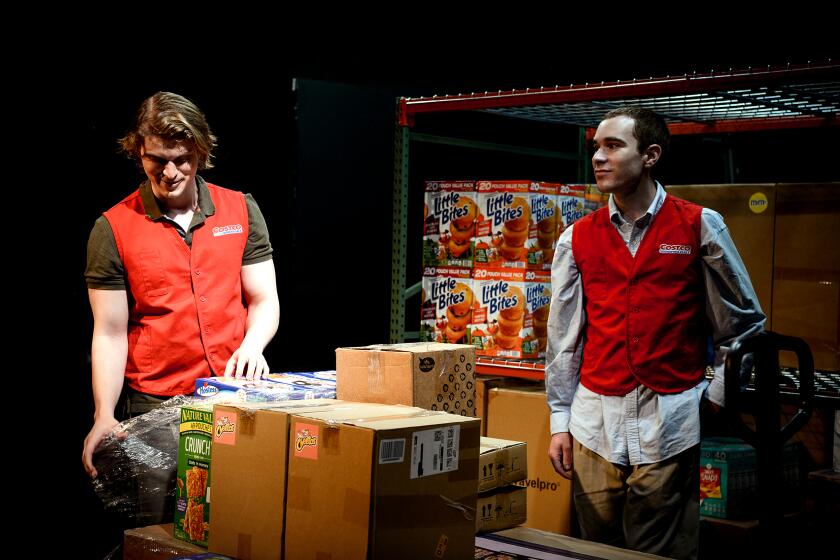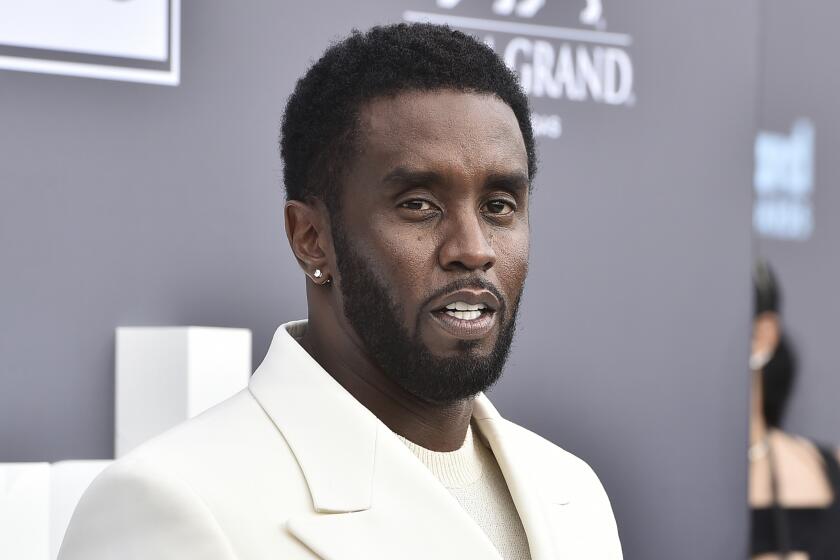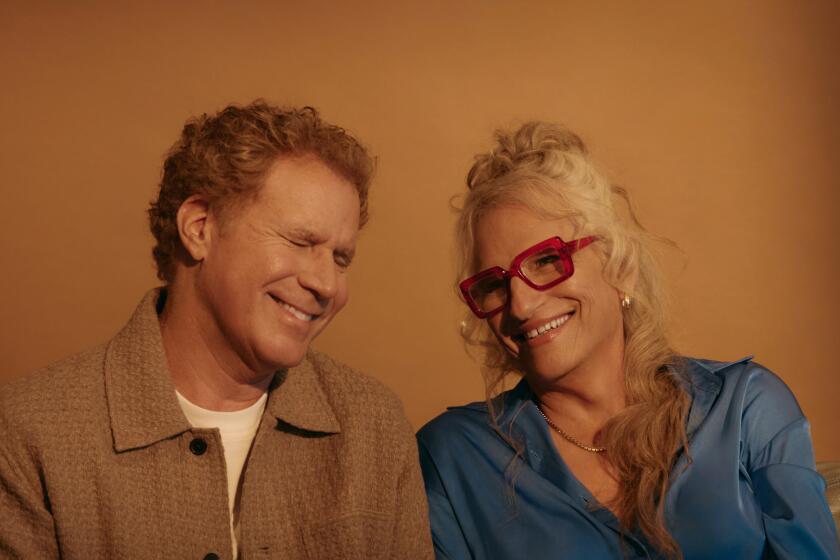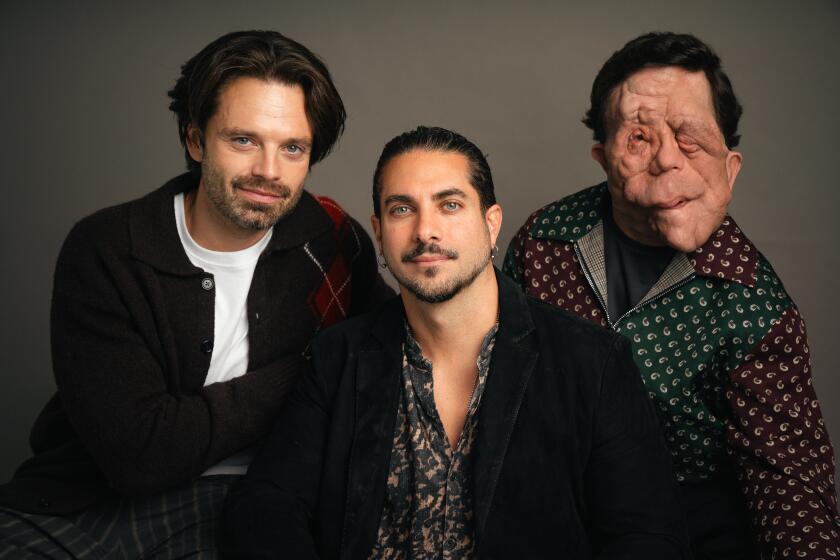BISSELL AS PRINCE : McKERROW, TIPPET JOIN ‘NUTCRACKER’
Another “Nutcracker,” another Clara.
Tuesday afternoon at Shrine Auditorium, it was Amanda McKerrow’s turn. This lovely young dancer, possibly the most promising of Mikhail Baryshnikov’s favored freshpersons, rose to the unaccustomed challenge with remarkable suavity and authority.
She obviously commands the basic prerequsites for the role of the impressionable child torn between the realities of youth and dreams of maturity. She is sweet and petite. She radiates demure conviction. Her technique is formidable, her musicality reassuring.
In the first act she looks about 13. She pouts deliciously when the boys tease her at the party. She flies eagerly into Godfather Drosselmeyer’s arms. She cradles his gift, the nutcracker, with care, and aims a fine flash of petulance at the guest who accidentally decapitates the toy.
She conveys instant happiness at the sight of her transformed cavalier, and observes the character divertissements with the cool politesse of a fairy-tale princess. Despite the lingering aura of a wholesome ingenue from the Midwest, she offers a more-than-passable impersonation of a grand ballerina in the exultant pas de deux.
She dances throughout with remarkable poise, clarity and bravado. Obviously, a strong mind and a strong will lurk behind that dainty exterior.
McKerrow constantly makes one want to applaud. However. unlike some other Claras--Gelsey Kirkland and Alessandra Ferri spring to mind--she doesn’t make one want Lto cry.
At this juncture, she has not mastered the subtle secrets of pathos. She plumbs the extremes of neither agony nor ecstasy. She hasn’t found the perfect fusion of the expressive demands of acting with the expressive opportunities implicit in dancing.
She doesn’t radiate much sensuality, latent or specific, and thus minimizes the eloquence of Clara’s awakening womanhood. Nor, in the final scenes, when she is torn between the idealized overtures of the prince and the practical magnetism of Drosselmeyer, does she convey much torment.
Yet.
There is, of course, time. At her debut in this complex role, she was hampered further by less than ideal partners. Patrick Bissell, the familiar Nutcracker-Prince, resembled Christopher Reeve as a terpsichorean Superman. He danced with ample muscular pizazz and exemplary control. He was courtly, dashing, almost charming. But he never was able to establish more than superficial rapport with the heroine.
This seemed to have a little to do with his being so tall and her being so tiny--a disparity that made those dizzy, climactic, spinning lifts look particularly easy. The general absence of electricity probably had more to do with mismatched temperaments, however, than with mismatched physiques.
An even more crucial mismatch involved the novel casting of Clark Tippet as Drosselmeyer. A few years ago, he served as a big, handsome, burly Nutcracker-Prince himself. Now, with the addition of a close-cropped beard and a dab of gray in his wavy locks, he pretends to have become the mysterious puppeteer and manipulator of destinies.
On this occasion, he executed the right tricks, gestures and steps. Unintentionally, he also provided a dapper mirror-image for Bissell in the climactic pas d’action . For the most part, he smiled brightly, moved forcefully, suggested vague discomfort and projected no character whatsoever.
The roster of Baryshnikov’s Ballet Theatre still suffers a chronic generation gap.
The generally well-oiled and well-applauded matinee encountered a tense moment near the end, when one of the four court clowns proved unable to return for the final round of buffoonery. Without benefit of white-face makeup, the versatile John Gardner apparently jumped, literally, into the breach.
Jack Everly served as the sympathetic conductor.
More to Read
The biggest entertainment stories
Get our big stories about Hollywood, film, television, music, arts, culture and more right in your inbox as soon as they publish.
You may occasionally receive promotional content from the Los Angeles Times.
